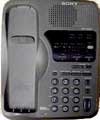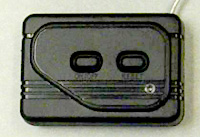
Automated Detection and Identification of Electronic DevicesThe time-varying currents that flow in electronic devices produce radiated electromagnetic emissions. Consumer electronics must meet certain standards regulating the maximum level of radiated energy, however the emissions from most devices can be readily detected within a range of about 10 meters. The goal of this project was to detect the radiated emissions from a variety of electronic devices (particularly RF receivers) and identify these devices based on their detected emissions. We looked at a variety of devices in the lab and found that the emissions from various types of devices is quite unique. This is illustrated by capturing short samples of the signals radiated by these devices and expanding their time scale by a factor of about 100,000. This maps the electromagnetic signal frequencies to acoustic signal frequencies. The captured samples can then be turned into .wav or .mp3 files allowing a person to "listen" to the RF signals being emitted by a given device. Sound files representing the electromagnetic emissions from a few electronic devices are provided below. Click on the links to "listen" to each device. As sound played through speakers or headphones, the unique nature of these radiated signals is clear. However, pre-processing and filtering of the received signals is required to recognize these signals in a noisy environment. Most of the project effort was devoted to looking at various ways of processing the received signals to maximize the ability to detect these signals in real time. Neural networks were employed to detect these types of signals automatically with some success. However, the most effective solution employed specific processing algorithms designed to hone in on the unique features of each device. Presentation SlidesDetection of Electronic Devices Based on Their Unintended Electromagnetic Emissions - pdf (1.4 MB) Publications
PatentsElectromagnetic Emissions Stimulation and Detection System, US Patent #7,464,005, Issued 12/09/08. |





